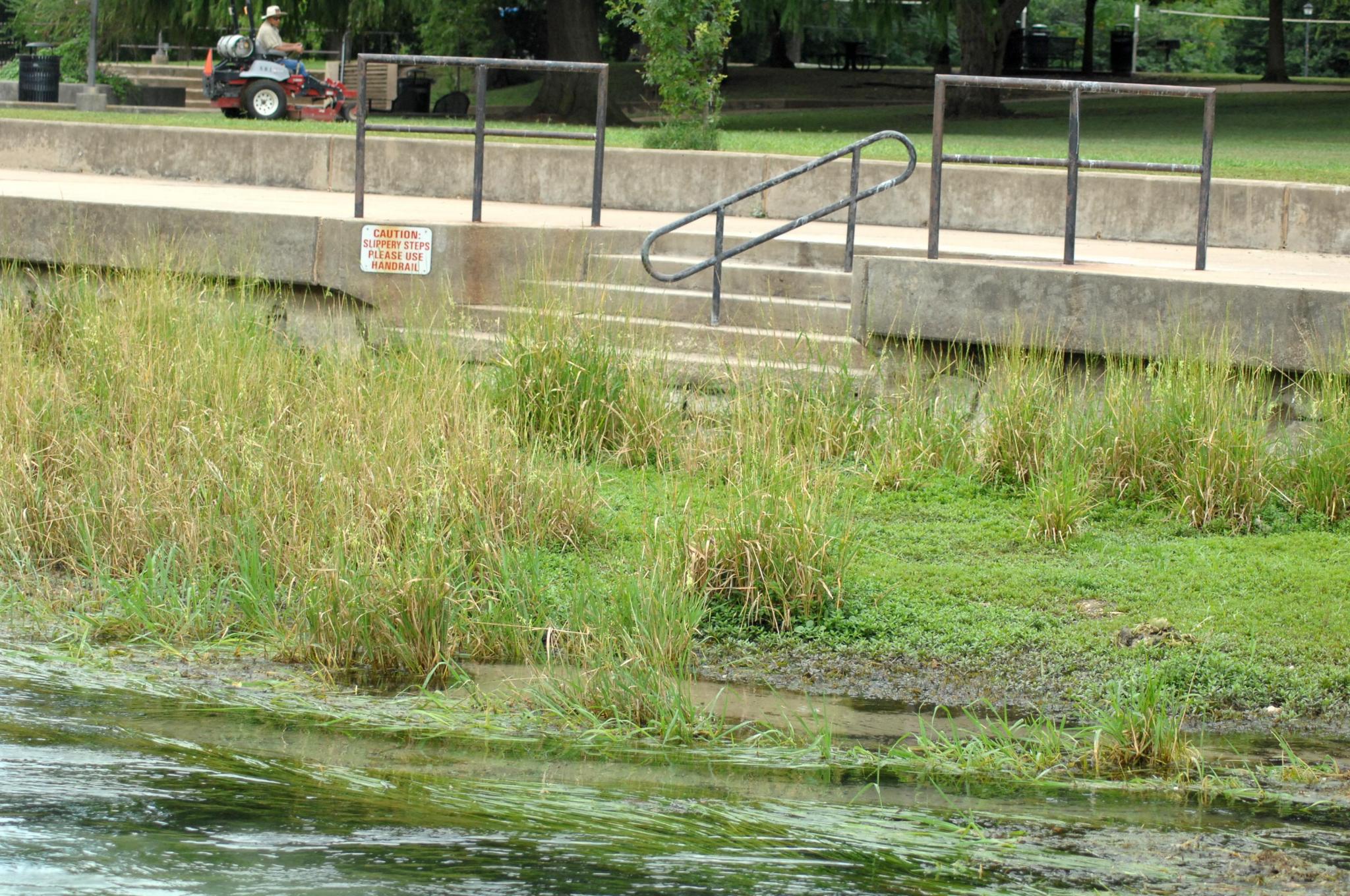
Federally-endangered Texas Wild Rice usually flows in the current; these days it’s growing on a patch of mostly dry land in the San Marcos River at Sewell Park. Daily Record photo by Rachel Willis
Where did the water go?
Everyone has noticed, but no one seems to have an answer that satisfies — why is the river so low?
Some of the endangered Texas Wild Rice at Sewell Park is growing on what is now essentially dry ground, and even Spring Lake is visibly lower than a couple of weeks ago.
Lower water levels are to be expected especially against a backdrop of developing drought — according to the drought monitor issued Aug. 16, most of Hays County is in “moderate drought” while western portions of the county have progressed to “severe drought.” Yet the gold standard of the health of the Edwards Aquifer, the output of the San Marcos Springs measured in cubic feet per second, was on Wednesday 136 — relatively healthy for this time of year.
Flow has been markedly lower several times over the course of the past 10 years. The last time it dipped below 100 cfs was in May of 2013 — but it decreased to 88 cfs in September 2011, to 86 cfs in September 2009, 85 cfs in August 2009 and 83 cfs in June 2009. During 2009, the flow remained below 100 cfs for two months, according to figures posted online by the Edwards Aquifer Authority.
“We are at least 30 cfs below the long term median flow based on the last 23 years of daily data,” Thom Hardy of The Meadows Center for Water and the Environment said. “Scary for sure, unless we get some substantial rainfall totals.”
Hardy said several factors influence flow at San Marcos Springs. “We know that recharge is dynamic and actual spring flows at San Marcos can vary by where the recharge has occurred,” he said. “We also know that depending on how much groundwater pumping occurs in Kyle and Buda, we can loose 10 cfs or more in springflow for San Marcos.”
However, he said he can’t attribute the current water levels “to other than the affects of drought on this system.”
As for the wild rice on the new bank at Sewell Park, he said there’s no indication that sediment — for example what comes down Sessom Creek from Texas State University construction projects up the hill— has essentially lifted the river bottom. “We have no data to suggest a large change in channel bottom anywhere,” Hardy said, though he added, “The major flooding over the last several years could have resulted in some aggregation of the stream bed in Sewell and other locations but will have to be checked against past survey data.”
In years past, when the water would be mysteriously low in the river, the rumor mill blamed Texas State University, which owns the Spring Lake Dam, of putting additional boards in the dam in order to maintain the level of Spring Lake.
Both hardy and Aaron Wallendorf, lake manager for the Meadows Center, said that’s not the case in this situation.
“This would be done by the university Facilities Management Department by removing or adding a board section from the head gates adjacent to Salt Grass restaurant,” Wallendorf said. “A formal protocol is in place for notifications by Facilities to give notice to the city and other stakeholders prior to taking any action...This is not an action that is done without discussion and formal notices.”
Twitter: @AnitaMillerSMDR











